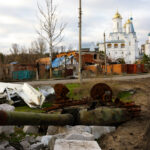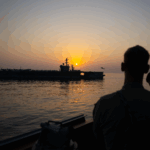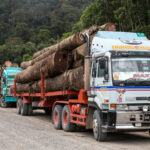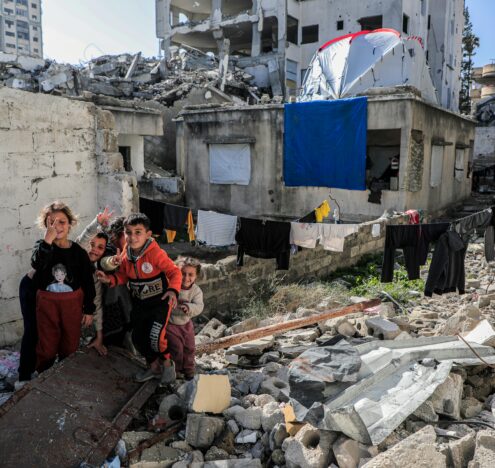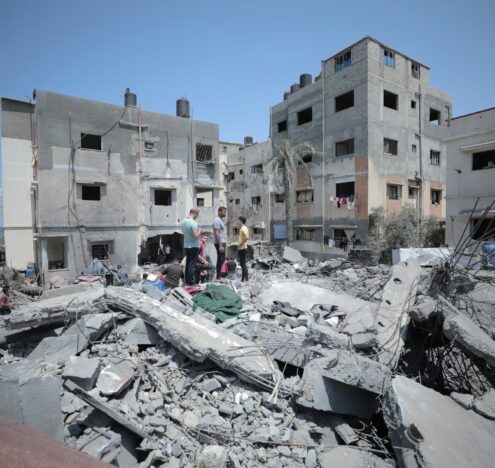The first five days were the worst. We were overwhelmed, perhaps as much as the people we were trying to help. The first aircraft of Afghan evacuees arrived just after midnight on Monday, Aug. 16, 2021. The inbound flow of newborn-to-elderly passengers did not stop for another 15 days. That first arrival, a record-breaking 823 people on a C-17 Globemaster with call sign REACH871, were the harbingers of more than 57,000 people transiting Al Udeid Air Base in the next two weeks.
During Operation Allies Refuge, I was privileged to witness the heroism of America’s Airmen as they leapt to the challenge of saving American citizens as well as Afghans and other foreign partners from the Taliban regime within the designated withdrawal timeframe. One of our core tenants in the US Air Force is that “flexibility is the key to airpower.” The soundness of that belief was probably never more demonstrated than in the last half of August 2021.
US servicemembers did not fail in the assigned task to evacuate Afghanistan. They saved more than 125,000 people for 125,000 chances at better lives and, in many cases, any life at all.
I witnessed USAF Security Forces members reflexively turn from securing aircraft for off-loading to placing infants in their air-conditioned vehicles for some relief from the dangerous Qatari summer heat. These “Defenders” opened their own supplies, providing food and water to evacuees who had gone days without either. As the pressure increased upon the base of one aircraft arrival after another without pause, 18-year-old Americans exhausted themselves to save one more life. Some of these airmen were only a year removed from their high school graduation but they were here now, when it counted, saving children from heat exhaustion and dehydration. As Senior Airmen Brett Rosa, 379th Expeditionary Security Forces Squadron response force leader, assessed his role, he said, “Hands down the most fulfilling experience I’ve had in my entire life is helping these people out of Afghanistan.”

Senior Airmen Brett Rosa, 379th Expeditionary Security Forces Squadron response force leader at Al Udeid Air Base, Qatar on Aug. 23, 2021. Photo by Airman 1st Class Kylie Barrow.
I witnessed medical personnel respond to hours of calls, often dozens of calls in one of those hours, during the first few days of arrivals. They administered countless intravenous bags, compresses, bandages, stitches, and even mental health services to evacuees uncertain of what they would find after entering a C-17’s big grey tail. Staff Sgt. Abigail Swanson, 379th Expeditionary Medical Operations Squadron medical technician said, “This is what I signed up to do. This is what the Air Force trained me to do. I am happy that I can help and use my skills in a situation like this.” Her statement and determination was indicative of the young leaders charged with this mission. Nine babies would be born at their clinic within the next two weeks. Three tiny humans greeted the world while still airborne, flying toward the freedom of their potential.

Staff Sgt. Abigail Swanson, 379th Expeditionary Medical Operations Squadron medical technician at Al Udeid Air Base, Qatar on Aug. 23, 2021. Photo by Airman 1st Class Kylie Barrow.
I witnessed the arrival of an additional 1000 soldiers, sailors, marines, airmen as well as allies and partners, ready to serve in multiple capacities. Looking around the operational updates, you would see officers from Singapore and the United Kingdom among others. Greater capability arrived in the form of NATO, UN, US Department of State, US Department of Homeland Security, and too many other agencies to list here. Qatar Airways represented just a sample, although a large one, of airlift possibilities. The Qatari military safeguarded evacuee operating locations alongside their American partners. To contradict Henry Kissinger: America has friends, and they showed-up when it mattered.
I witnessed airmen working 14-hour shifts or longer and then return to volunteer in a capacity different from their primary duties. They believed “a few hours more” would alleviate someone’s suffering or raise another’s spirits to get another step closer to an outbound flight. Children were the same as children everywhere. They kicked soccer balls back-and-forth with servicemembers. Little hands were eager to show their knowledge of high-fives and fist-bumps to Americans. In addition, many civilian employees and their family members volunteered in crowded hangars and warehouses where they cleaned, distributed food, or helped reunite families.
The success of our mission is clear. Policy debates filled the broadcast airwaves, book tours, and expert panels for some time, but US servicemembers did not fail in the assigned task to evacuate Afghanistan. They saved more than 125,000 people for 125,000 chances at better lives and, in many cases, any life at all. It was truly a global effort with servicemembers integrating from around the world to focus on one mission. We cannot forget, however, the ones who could not escape in the allotted time frame or the victims of the Taliban takeover of their country. With that sobering thought in mind, we can still celebrate the remarkable demonstration of airpower in bringing hope to the 125,000. I cannot imagine being any prouder of my brothers and sisters in uniform than this time, right now. The descendants of these evacuees, a century from now, will represent a million monuments to an extraordinary military achievement.
Matthew G. Butler is an active duty officer in the US Air Force. In his personal capacity, he is also a Defense Council member of the Truman National Security Project. His views are his own and do not represent the official positions of the US Air Force or Department of Defense.


